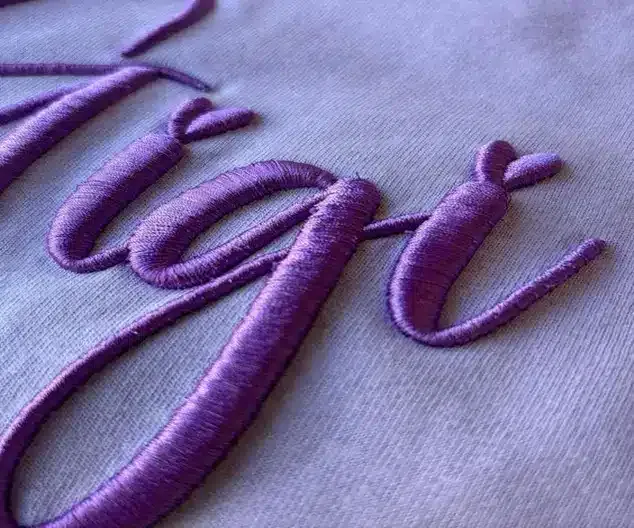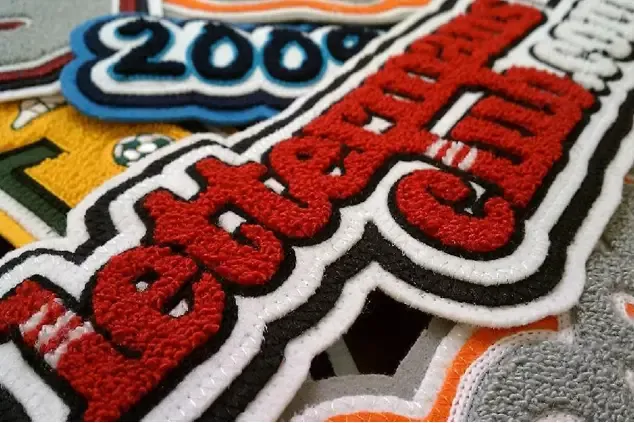What is Chenille Embroidery? A Beginner's Guide to This Plush Technique
Chenille Embroidery: Explore This Soft and Luxurious Embroidery Technique
Chenille Embroidery: Explore This Soft and Luxurious Embroidery Technique
Chenille Embroidery Basics:
The primary tools needed for chenille embroidery include chenille needles and chenille threads. Chenille needles differ from ordinary embroidery needles with thicker shafts to prevent the breakage of fabric threads.
The sizes of the needles range from eight (8) to eighteen (18) with size fifteen (15) being the most recommended.
Chenille threads are different from regular threads used for sewing or embroidery. Threads used in chenille products are coated with a thick, soft layer of thread that makes it easier to embroider and fill areas of design. Usually made from cotton, some chenille is also made from rayon or silk.
Conclusion
Both chenille and chain stitch are traditional embroidery techniques and rooted to centuries back. They both use hooked needles. This technique is also known as moss stitch. Chenille embroidery is designed from wool or cotton yarn.
What is chenille embroidery?Chenille embroidery represents a form of needlework where the motifs are worked in thick yarn to produce raised, velvety effects often applied as patches to garments.
What is chain stitch embroidery?Chain stitch embroidery is applied in looping one thread back to itself to make stitches that are interlocking and resemble chains, mainly used in delicate decorative work.
How are chenille and chain stitch embroidery different?Chenille embroidery is all about a textured, 3D effect using plush yarn, while chain stitch embroidery is for flat, interlinked loops ideal for outlining and intricate designs.
What are the main applications of chenille embroidery?Chenille embroidery can be very suitably applied to letterman jackets, biker apparel, and decorative patches due to its raised and textured appearance.
Can chenille and chain stitch embroidery be done by hand?Chenille embroidery, however, usually demands specialized machines for the plush, raised effect. Chain stitch can be done by hand with practice, though.
What are Embroidered Patches?
Custom embroidered patches are a classic and versatile form of textile art, widely appreciated for their intricate designs and timeless appeal. These patches are created by stitching threads onto a fabric base using advanced embroidery machines, resulting in a textured and visually striking design. Originating centuries ago, embroidery has been a symbol of craftsmanship, with patches evolving to represent team spirit, brand identity, and personal expression.
Commonly used for uniforms, club apparel, military badges, and promotional merchandise, embroidered patches combine durability with aesthetic charm. They make woven patches with unified designs and unbelievable detailing. Moreover, they also make long-lasting PVC patches having complex 2D and 3D artwork.
Unlike chenille patches, which are characterized by their plush and raised surface, embroidered patches have a smooth, detailed finish that allows for intricate designs and vibrant patterns. Additionally, while chenille patches evoke a bold, vintage feel, embroidered patches offer a more refined and versatile option, making them suitable for a variety of applications.
These patches are particularly valued for their durability and timeless appeal, standing as a preferred choice for those seeking a classic look that represents heritage and pride. Whether adorning a sports jersey or commemorating an event, embroidered patches continue to be a staple in the world of textile art.
Full Guide to Chenille Needles: Sizes, Uses, and Tips
Over time everything has evolved with the sole purpose of making your life easier. The embroidery needles are the same way. We’ve come a long way from stitching with sharpened bone fragments to a vast array of needles. Now that the market is flooded with all sizes of embroidery needles, it’s easy to find one that works best for your project. That’s where the chenille needle comes in to give your project a new depth and help you thrive in your craft.
Do you have a particular question about the chenille needles? Then use the table of contents below to jump to the most relevant section. And you can always go back by clicking on the arrow in the right bottom corner of the page. Also, please note that some of the links in this article may be affiliate links. For more details, check the Disclosure section at the bottom of the page.



Tegs:
Search
Recent Posts
Subscribe to Updates
Get the latest posts and fashion insights directly in your inbox.